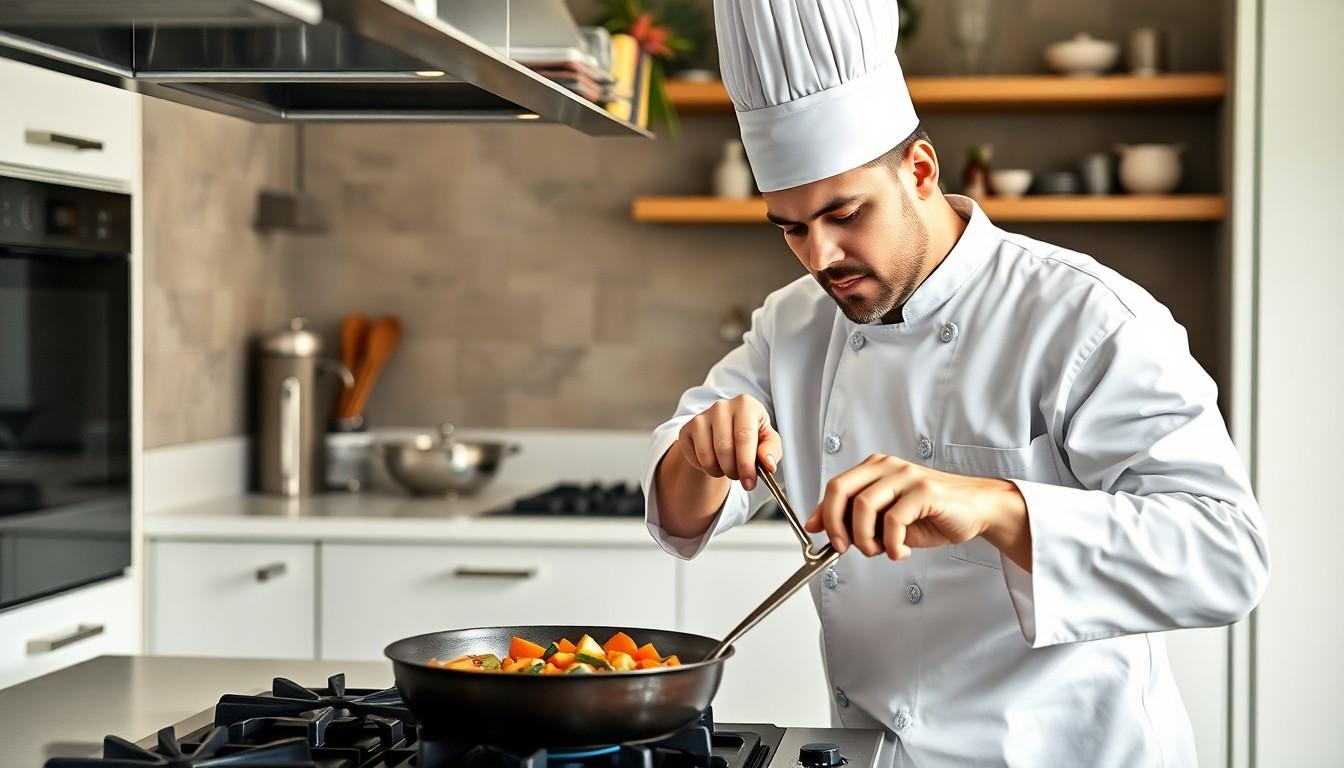Physical Address
304 North Cardinal St.
Dorchester Center, MA 02124

Culinary science isn’t just about tossing ingredients into a pot and hoping for the best. It’s where art meets science in a delicious dance of flavors and techniques. Imagine transforming a simple tomato into a gourmet masterpiece with just the right balance of acidity and sweetness. That’s the magic of culinary science—turning everyday cooking into an exhilarating adventure.
Culinary science combines the principles of cooking with scientific methods, enhancing traditional cooking practices. This field encompasses various aspects, including chemistry, physics, and nutrition, to produce high-quality food.
Culinary science involves the study of food preparation techniques, ingredient interactions, and sensory experiences. It focuses on the chemical reactions occurring during cooking and how they affect flavors and textures. This discipline includes molecular gastronomy, food preservation, and nutritional analysis. Chefs and food scientists work together to innovate new recipes and improve existing ones, utilizing scientific knowledge for better cooking outcomes.
Modern cooking relies heavily on culinary science for recipe development and food preparation. Understanding food chemistry leads to enhanced flavors and improved dish textures. Precision in cooking techniques, such as sous-vide or fermentation, often results from scientific principles. Additionally, culinary science promotes healthier cooking practices by analyzing nutritional content. This knowledge encourages chefs to create balanced, flavorful dishes that meet diverse dietary needs.

Culinary science encompasses the fundamental principles that govern cooking practices. Understanding these principles makes cooking a more precise and enjoyable process.
Chemical reactions play a crucial role in transforming ingredients during cooking. Heat initiates the Maillard reaction, which creates desirable flavors and aromas through the interaction of amino acids and sugars. Additionally, caramelization enhances sweetness, adding depth to desserts and sauces. When acidic ingredients, like vinegar or citrus juice, come into contact with proteins, they can denature them, resulting in changes to texture. These reactions highlight the importance of timing and temperature in achieving the desired outcomes. Each technique relies on specific chemical processes to elevate a dish beyond basic preparation.
Techniques that enhance flavor utilize various methods to maximize taste. Roasting vegetables caramelizes their natural sugars, intensifying their flavors while adding a pleasant texture. Techniques like brining infuse meats with moisture, enhancing both flavor and tenderness. Sous-vide cooking allows precise temperature control, improving flavor retention in proteins while ensuring even cooking. Fermentation introduces unique profiles and beneficial bacteria, often found in foods like kimchi and yogurt. Each of these methods showcases the interplay of technique and ingredients, demonstrating how culinary science enriches the overall dining experience.
Culinary science finds numerous applications in everyday cooking, enhancing flavors and optimizing preparation methods.
Recipe development relies heavily on understanding ingredient interactions and flavor profiles. Chefs experiment with various combinations of herbs, spices, and cooking techniques to create dishes that stimulate the palate. Structured testing enables culinary professionals to refine recipes based on texture and taste, ensuring consistent results. A systematic approach reveals how adjustments in ingredient ratios or cooking temperatures affect the final outcome. Sensory evaluations, often involving taste tests with diverse participants, drive the innovation process. Successful recipes incorporate feedback, making them adaptable for different dietary preferences.
Technology significantly transforms culinary practices, streamlining preparation and elevating food quality. Modern tools like sous-vide machines offer precision in cooking temperatures, resulting in evenly cooked proteins. Digital thermometers ensure food safety by accurately monitoring internal temperatures, reducing risks associated with undercooked meals. Additionally, apps provide access to vast databases of recipes and nutritional information, aiding chefs in meal planning. Innovative gadgets like food processors and blenders facilitate techniques such as emulsification and pureeing, enhancing texture. Overall, technology plays an essential role in modern kitchens, supporting chefs in their quest for excellence.
Culinary science continues to evolve, influenced by new discoveries and technologies. Innovations drive creativity in the kitchen, making cooking an even more engaging experience.
Emerging technologies significantly impact culinary techniques. 3D food printing allows chefs to create intricate designs that enhance presentation. Smart kitchen appliances streamline preparations, increasing efficiency in food production. Additionally, the rise of plant-based ingredients has led to innovative recipes appealing to health-conscious diners. Chefs now incorporate sensory experiences into dishes, focusing on texture and aroma to elevate meals. Trends like fermentation and pickling gained popularity, showcasing the importance of flavor preservation and enhancement. Meanwhile, data analytics helps culinary professionals refine menus by tracking consumer preferences.
Sustainable practices become crucial in culinary science, focusing on reducing food waste and sourcing local ingredients. Chefs adopt farm-to-table models, ensuring fresh produce directly benefits nearby communities. Emphasizing seasonal ingredients minimizes environmental impacts while supporting local farmers. Through the integration of waste management systems, kitchens actively repurpose by-products, turning scraps into flavorful stocks or compost. Furthermore, culinary education increasingly includes sustainability principles, preparing future chefs to prioritize eco-friendly approaches. With technology, optimizing ingredient usage through precise calculations lessens overall waste. Sustainability represents a pivotal aspect guiding the future of culinary practices.
Culinary science represents a dynamic fusion of artistry and scientific inquiry that transforms how food is prepared and enjoyed. By understanding the intricate relationships between ingredients and the reactions that occur during cooking, chefs can elevate their dishes to new heights. This discipline not only enhances flavors and textures but also promotes healthier cooking practices that cater to diverse dietary needs.
As culinary science continues to evolve with technological advancements and innovative techniques, it opens up exciting possibilities for both chefs and home cooks alike. Embracing this knowledge leads to a more sustainable and flavorful approach to food, ensuring that culinary creativity thrives in the years to come.